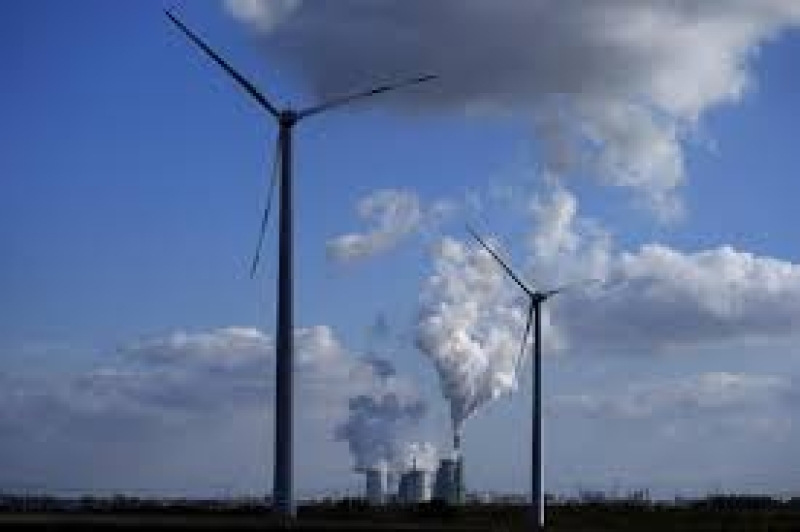- CA Yunus pays homage to Liberation War martyrs on Victory Day |
- Bangladesh capital market extends losing streak for second day |
- Bangladesh celebrates Victory Day Tuesday |
- 'Different govts presented history based on their own ideologies': JU VC |
Most nations miss deadline for plans to fight climate change

Nearly 200 nations faced a Monday deadline to file what the United Nations' climate chief calls “among the most important policy documents governments will produce this century” — their plans on how they will cut emissions of heat-trapping gases.
Most won't make the deadline. The U.N. says that's OK as long as they are working on them.
So far only a dozen of the 195 nations that signed the 2015 Paris climate agreement have filed their national plans for cutting emissions by 2035. Those nations account for only 16.2% of the world's carbon dioxide emissions — the chief human-caused heat-trapping gas — and almost all of that is from the United States, where President Donald Trump has already discarded the plan submitted by President Joe Biden's administration.
Aside from the U.S., the only major emitters to submit 2035 targets are Brazil, the United Kingdom and the United Arab Emirates. The Marshall Islands, Singapore, Ecuador, Saint Lucia, Andorra, New Zealand, Switzerland and Uruguay have filed their plans, but they all produce less than 0.2% of the world's carbon dioxide.
U.N. Climate Secretary Simon Stiell said that more than 170 countries have told his office they are working on their national plans, so he’s not worried. He emphasized quality over timeliness.
“Taking a bit more time to ensure these plans are first-rate makes sense,” Stiell said last week in a policy speech in Brazil. “These will be the most comprehensive climate plans ever developed.”
Champa Patel, policy director of the nonprofit Climate Group, wasn't as forgiving.
“It's worrying that countries are failing to meet the urgency of the moment,” Patel said. “The world cannot afford inaction.”
These plans — officially called Nationally Determined Contributions or NDCs — are the main mechanism of the landmark international agreement. Every five years, nations are supposed to come up with new and stronger five-year plans that outline their voluntary plans to limit or reduce emissions of greenhouse gases from the burning of coal, oil and natural gas.
The latest versions are supposed to be compatible with the Paris agreement's goal of limiting long-term warming to 1.5 degrees Celsius (2.7 degrees Fahrenheit) above pre-industrial times. The world is now at 1.3 degrees Celsius (2.3 degrees Fahrenheit) since the late 1800s and on pace to warm another 1.8 degrees Celsius (3.2 degrees Fahrenheit), according to the U.N.
Scientists say the warming atmosphere is driving ever more extreme weather events, including flooding, droughts, hurricanes, heat waves and wildfires that are killing people and causing billions of dollars in damage every year.
The new targets are also supposed to be for all greenhouse gases: carbon dioxide, methane, nitrous oxide, hydrofluorocarbons, perfluorocarbons and sulfur hexafluoride. They should cover the entire economy not just the energy sector, according to a 2023 agreement.
Climate Action Tracker — a group of scientists and other experts who analyze nations' climate plans for domestic emissions — found that four of the six NDC targets they looked at so far got an “almost sufficient" for their target of holding warming to 2 degrees Celsius. Switzerland got an insufficient, with the group saying its plan was more compatible with 3 degrees of warming. The U.K.'s plan was rated compatible for 1.5 degrees of warming.
Britain's plan aims to cut emissions by at least 81% by 2035 when compared to 1990 emissions, mentioning efforts to phase out new internal combustion cars — which only use gasoline and diesel — by 2030. Brazil in its plan gave a range of emission cuts of 59% to 67% by 2035 when compared to 2005 emissions, talking heavily about an emphasis on climate justice, repeatedly mentioning efforts to combat deforestation.
Most of those countries were rated insufficient when it compared what they plan to do with what they are actually doing and what their “fair share” is considering their resources and history. That included the U.S., where one of Trump's first actions last month was pulling out of the Paris agreement.
“We know already right now that whatever (other) countries put out, it is not enough,” Climate Action Tracker co-founder Niklas Hohne told The Associated Press Monday. “They all need to do more.”
The deadline — set in the Paris agreement to be nine months before the next international climate negotiations, this year in Belem, Brazil — is 11:59 p.m. in Germany, where the U.N. climate office is, reports UNB.
But Stiell said the real deadline is in September. That's when the United Nations will tally up all the plans and figure out how much emissions will be cut and how much future warming will be prevented if countries do what they promise.
That's a big if.
The European Union and China should be done by the middle of the year and India will only submit their target after other major emitting nations do so, Hohne said.

